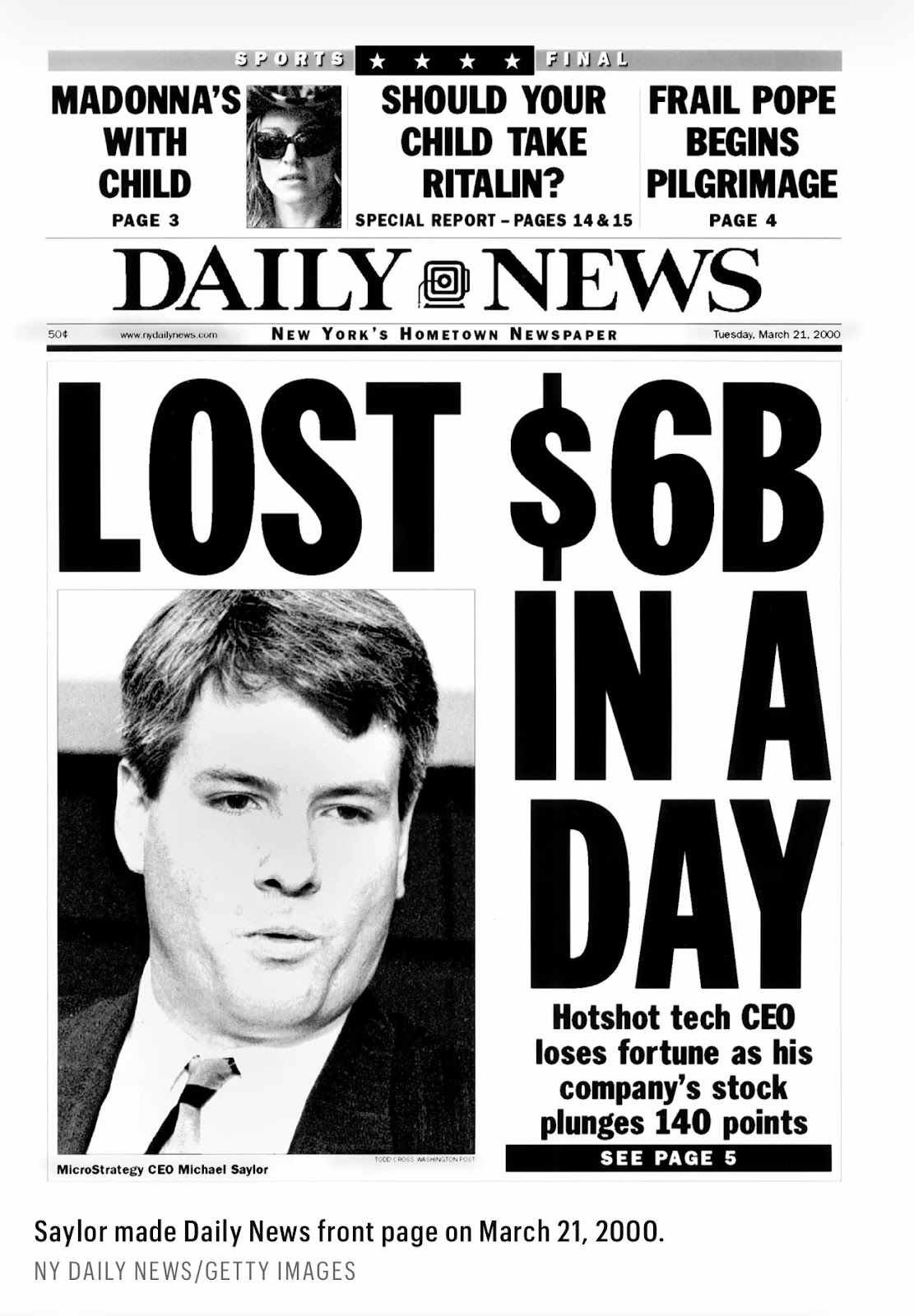
A Safe (And Smart) Way To Join The Crypto Bandwagon
With A Hidden Asset Worth As Much As The Business
| Below is the most recent issue of Biotech Frontiers, from analyst Erez Kalir. In this issue, Erez provides one buy recommendation and a full review of the Biotech Frontiers portfolio. In addition to hosting Porter & Co. Biotech Frontiers on our website, we also make it available as a downloadable PDF. Subscribers can access this issue as a PDF on the “Issues & Updates” page here. If you have any questions, please give Lance, our Director of Customer Care, and his team a call at 888-610-8895 or internationally at 443-815-4447. Again, thanks for being part of Porter & Co. |
As the COVID pandemic unfolded in 2020, MicroStrategy (MSTR) CEO Michael Saylor found himself in a rut. His company’s stock hadn’t moved in years and seemed devoid of any exciting story that could propel it upward. While the market valued MicroStrategy at $1.5 billion, this figure was a far cry from the tens of billions the company had been worth over two decades earlier during the dot-com bubble, when Saylor’s personal stake alone had amounted to almost $10 billion.
Saylor was no stranger to taking entrepreneurial risk and the attendant cycle of boom and bust. Just a few years after graduating from Massachusetts Institute of Technology (“MIT”), where he studied aeronautics and science, Saylor launched MicroStrategy in 1989 with a few MIT friends. The company initially focused on boring data-mining software. But as the internet bubble took off, Saylor deftly re-positioned MicroStrategy to benefit, buying up domain names such as hope.com and voice.com. MicroStrategy stock soared, climbing to $313 per share in 2000, more than 30x its IPO price of $12.
The bursting of the dot-com bubble in 2000 hit MicroStrategy hard. Unlike thousands of other companies that filed for bankruptcy, the company survived. But its stock slid all the way down to $0.45 per share, a 99.9% decline from its peak. Saylor landed on the cover of the New York Daily News with the unenviable title of the man who “Lost $6 Billion In A Day.” Still he did what needed to be done to survive, settling an inquiry by the U.S. Securities and Exchange Commission (“SEC”) by paying $11 million and undertaking a 10-for-1 reverse split on shares of MicroStrategy.

Over the ensuing decades, Saylor searched for the “next new thing,” a trend that he could ride as he had the growth of the internet. He struggled to find one. Aware of cryptocurrencies soon after their emergence, he initially dismissed Bitcoin (BTC-USD) in a 2013 Twitter post as a fad whose “days are numbered.”
But now in 2020, amid the thick of COVID, Saylor found himself re-thinking his views on Bitcoin. A keen student of financial history, Saylor grasped that the federal government would print and spend trillions to reflate the economy after the pandemic. These measures could well precipitate inflation. The more he studied Bitcoin, the more he came to believe it could be one of the biggest beneficiaries of this reflationary spending. More importantly, he came to believe in Bitcoin as the digital version of “sound money.”
And so later in 2020, Saylor pitched MicroStrategy’s board on an audacious plan: Take half of the company’s $500 million cash pile and invest it in Bitcoin. The board agreed, and MicroStrategy made its first purchases of the cryptocurrency at a price of around $11,000 per coin. Although Bitcoin dipped to $9,000 soon after, it finished 2020 above $26,000, more than double MicroStrategy’s initial cost basis.
That was all the vindication Saylor needed to invest with conviction. With his board’s support, he began borrowing aggressively to increase MicroStrategy’s stake in Bitcoin, taking on billions in debt to accumulate the cryptocurrency. Drawing on his decades’ experience at the helm of a public company, Saylor tapped into all the different ways MicroStrategy could raise fiat money to plough into continued Bitcoin purchases – bank loans, convertible debt, and even secondary sales of the company’s stock. Last year alone – four years into its foray into Bitcoin – MicroStrategy raised a staggering $23.2 billion in combined debt and equity to fund its ongoing crypto purchases.
As Bitcoin’s price has risen – it now trades for around $100,000 – MicroStrategy’s stock has experienced an even greater parabolic rise. Today the company, just renamed Strategy, has a market capitalization of $85 billion – a staggering gain of over 50x in the five years since Saylor embarked on MicroStrategy’s Bitcoin accumulation strategy. Perhaps even more notable, the company trades at around a 2x premium to the net asset value of the Bitcoin it holds, which probably reflects MicroStrategy’s status as an easy, “go to” way for both institutional and retail stock market investors to own exposure to Bitcoin without the complexity of holding the cryptocurrency itself.
For subscribers who have ridden part or all of the MicroStrategy train, congratulations. This issue of Biotech Frontiers will offer you a chance at an encore.
For subscribers who missed it, this issue is especially for you: a recommendation of a company that is now as little-known as MicroStrategy was back in 2020, with very real potential for similar upside.
This content is only available for paid members.
If you are interested in joining Porter & Co. either click the button below now or call our Customer Care Concierge, Lance James, at 888-610-8895.